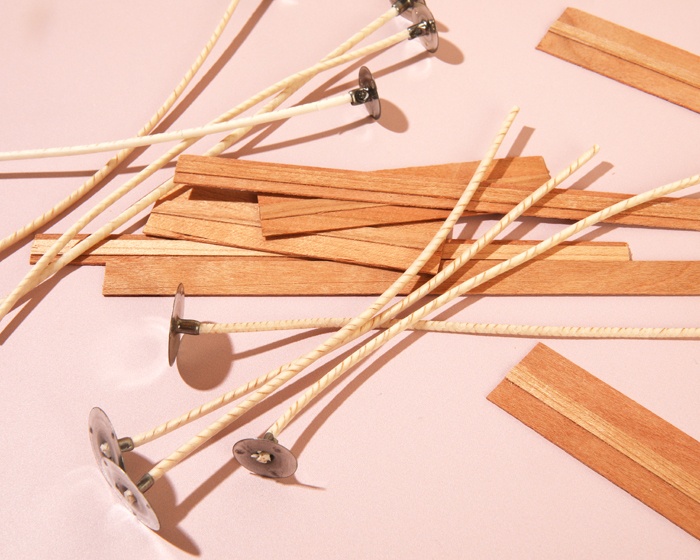
Making candles is a fun way to express your creativity, create something useful, and even start a small business. There are a few things that go into making a great candle: the wax you choose, the container you use, the fragrance and color choices you make, and the wick. Wick choice is often overlooked, and we hope this article will help. We also offer a Candle Wick Sampler so you can try out different wicks and see which one works best.
When we think about candles, we probably think the most about how we want it to make the room smell, what color the wax should be, and the size and the aesthetic of the candle and its container. But in order to ensure that the candle performs well and meets your expectations, the candle wick that you choose is incredibly important.
What are candle wicks and why is wick choice so important?
A wick is the burning mechanism in a candle, usually the little string that comes out of the top. It can be made of a variety of things: hemp, cotton, cotton lined core wicks, zinc threaded wicks, tin core wicks, and wood. Wicks that are made out of fiber can be flat, knitted, square, or braided. Wicks that have cores can be either braided or knitted but have a rigid material (cotton, zinc, or tin) running through the center of the wick to keep the wick upright and more rigid. Wicks can be pre-tabbed with metal stands at the bottom or come on a giant spool.
The choice of wick for your candle affects both how strong the throw (the amount of scent the candle puts off) is and how the candle burns. An appropriately wicked candle will burn more cleanly with minimal carbon build-up, does not flicker and gives reliable burn times and even fragrance throw.
You can find all of the candle wicks that Bramble Berry offers on our Wicks page!
Choosing your candle wick
There are a few things to think about when choosing a wick for your candle:
- The size of the candle wick
- The material that the wick is made from
- The type of wick
Candle wick size
Candle wick size refers to the thickness of the wick. This changes the rate at which the wick can take up wax from the candle; larger wick sizes will draw more wax and smaller wick sizes will draw less wax. Similarly, wick size also influences the size of the flame produced as the candle burns.
If you choose a wick that’s too small, you run the risk of a tunnel that just burrows straight through the middle of the candle, leaving lots of wax on the sides that is not burned and goes to waste. This can also result in a drowned wick: when the wick becomes covered with melted wax.
If you choose a wick that’s too big, all of the wax melts quickly, and there is too much fuel (the wax) going through the wick. This can cause the wick to mushroom out (a buildup of carbon on the end of the wick that can look like a mushroom), smoke to form, and creates a burning experience that progresses too quickly and could be dangerous depending on the size of the flame.
The first step to figure out which wick to use is to find out the interior size of your candle container. Once you figure out the diameter, you can consult the Wick Guide below to start with the wick options.
Candle wick materials
Most candle wicks are made with cotton. These fibers are braided, knitted, or twisted together to form the wick. Cotton fibers draw the melted wax up from the melt pool and feed it to the flame at the tip of the candle wick. Cotton candle wicks may also be treated with a substance to prevent the wick from burning too quickly.
Cotton wicks come in a few different types. Flat-braided cotton wicks are designed to curl as they burn, bringing the tip of the wick into the outer edge of the flame. This area of the flame burns hotter than the inside of the flame, so this curling action makes the wick self-trimming; the used wick is burned away rather than needing to be trimmed.
Square-braided wicks have an open construction that allows more melted wax to travel through the wick. They were originally used to deal with thicker waxes, like beeswax. These wicks are also appropriate for large container candles, because they can support a large flame, which means a wider melt pool.
Cotton candle wicks can also come with cores of different materials. Zinc-core candle wicks are braided cotton wicks with a very fine zinc wire at their core. This makes the candle wick more rigid, allowing it to stand and stay in place better during the candle making process.
Candle wicks may also have a paper core, or have paper interwoven with the cotton fibers. This paper helps the candle burn hotter, which creates a larger melt pool.
Wooden candle wicks have just recently become popular. These wicks are made from a flat piece of wood and function in very much the same way that a cotton wick does; the melted wax from the melt pool of the candle travels through the wood and feeds the flame at the top.
When choosing a wick, be sure to avoid any that are lead-core. While the Consumer Product Safety Commission took action in the early 2000s to phase out lead-core wicks, candles made in developing countries often have them so take care to ensure that your wicks are zinc, cotton or tin cored if you are using a cored wick.
Performing a burn test
The best way to see if you’ve chosen the right wick for your candle is to do a burn test! This involves burning a few different types of wicks to see which one is going to give you the best results with your candle size and wax type.
It’s best to do a burn test with at least 3 different wicks for comparison. The smaller the wick number, the smaller the wick within the same family or nomenclature. There are different types of wicks, which are indicated by the letters in front of the number; for example, a HTP 52 wick is not the same as a CD 52 wick which is not the same as a WU 52 wick.
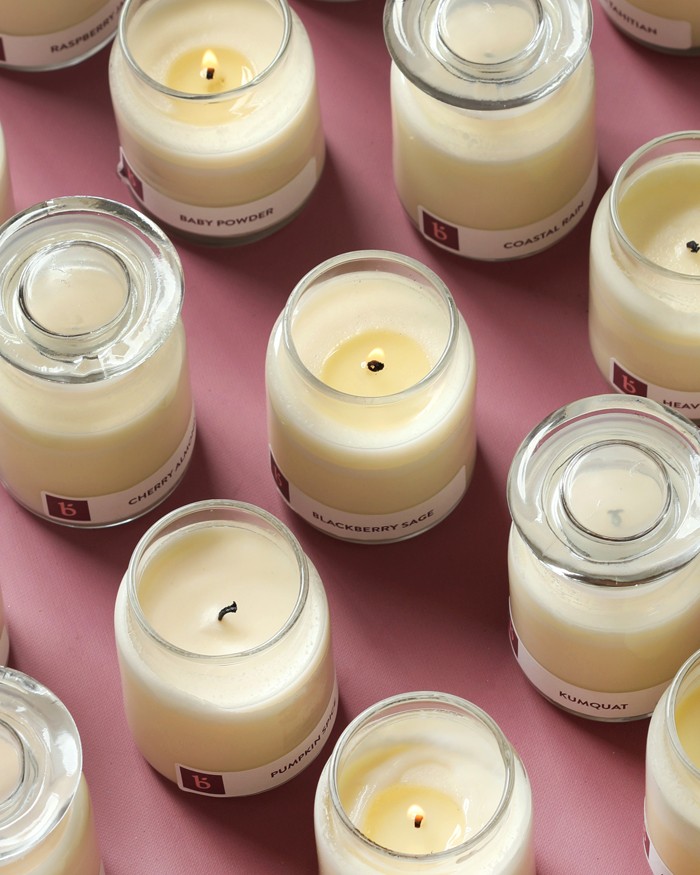
Testing your initial wick in your choice of wax with no color added and no fragrance is the first step. Label the candle container with the type of wax and the type of wick. Once you have poured the wax and wick, let the candle harden (or “cure”) for 24 hours. Trim the wick to 1” above the top of the candle wax. Light the candle and let the candles burn in a safe area for a minimum of 3 hours. Make sure that your candle jars are the same size when testing multiple wicks. Perform your burn test on a flat, heat safe surface away from drafts. Make sure the candles in your burn test are at least three inches away from one another. This prevents the heat from one candle from influencing the burn of the candle next to it.
After the 3 hour burn period, the melt pool should be just to the wall of the candle container. There should not be a lot of soot happening, mushrooming (carbon build-up), and the burn pool should be even. If the melt pool does not extend all the way to the wall of the container, this may indicate that the wick is too small. If there’s soot around the edge of the container or carbon build-up on the end of the wick, that might mean that your wick is too large.
Once you have decided which is your favorite wick size, repeat this process with the fragrance of choice and then the colorant of choice. Both of these ingredients can affect the burn pool, the hot throw (scent throw), and the quality of the burn.
We have a video on performing a burn test to help you out!
Candle wicks and wax choices
The wax you choose will affect burn time, burn pool, and scent throw. Vegetable waxes, such as the Bramble Berry Coconut Soy Wax, have a melt point of around 110 degrees whereas Goldenwax is just slightly higher around 113 degrees. When you are performing a burn test, ensure that you are using the same wax and the same containers to make sure you have a meaningful comparison. Beeswax is incredibly hard and takes a large wick to ensure a clean burn pool. Other waxes do well with a smaller wick, and the same wick that works for beeswax might be too large for these waxes.
We carry a variety of candle waxes; check them out on our Candles page!
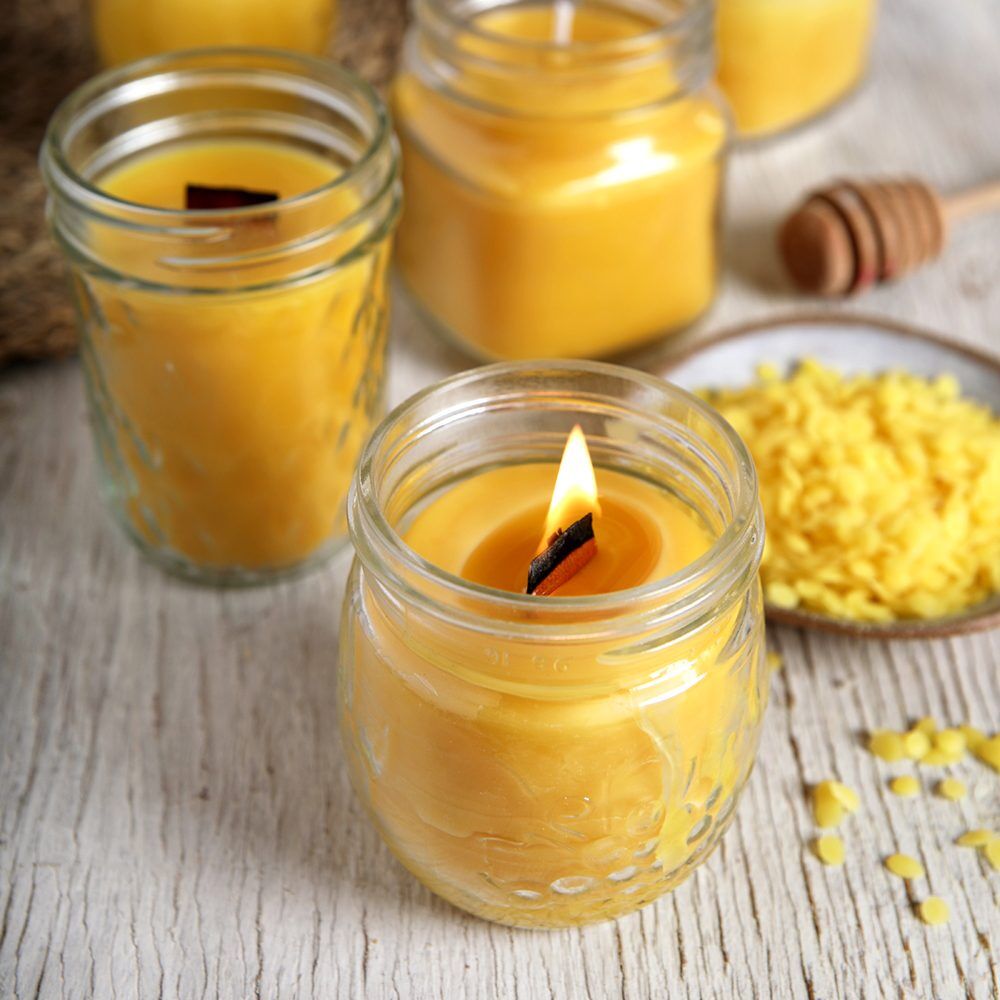
Candle wicks and containers
The choice of container will affect the burn pool and the wick you choose. Certain containers, like those with thick walls like concrete or plaster, will hold heat better and create a more hospitable environment for a full burn pool. A thin-walled container like glass will allow more heat to escape and make the flame work harder to melt the same amount of wax. Make sure that when you are doing wick tests that you use the same container to test each wick under consideration.
Fragrance and colorant and candle wicks
The fragrance choice for candle making is important for making the room smell good but also because of how the fragrance reacts with the wax and the wick. Since fragrance oils are composed of essential oils and aromatic compounds (aromachemicals), there are a few variables that can affect how the candle burns. Different scents will burn slightly differently in the same blend of wax. It’s important to test with your combination of wax, fragrance, and colorant to determine the best wick for the candle.
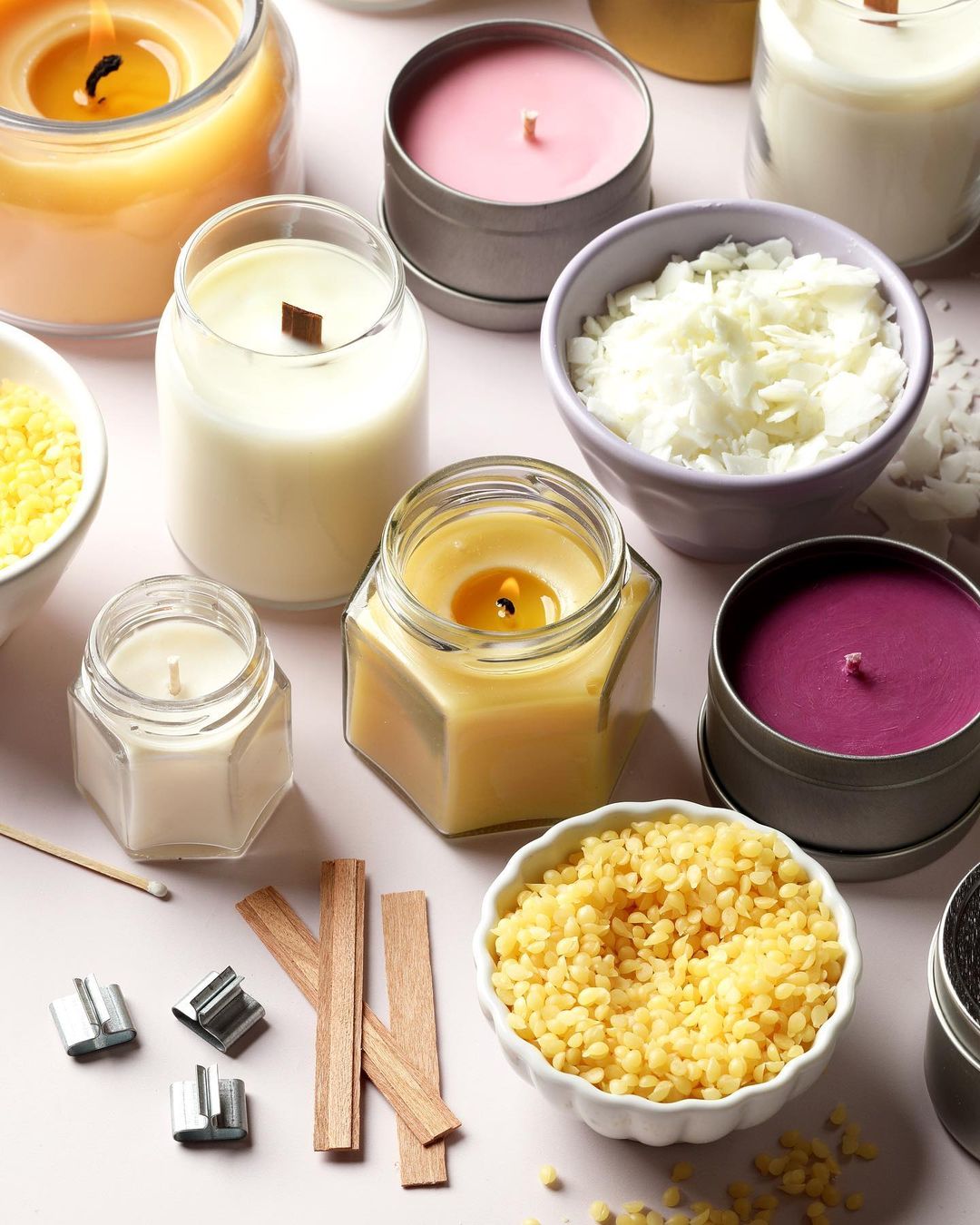
Colorants wick-up (move up) the candle wick with the fuel (the melted wax). That’s why it’s important to always use candle-safe colorants. The colorant you choose affects the way the wax moves up the candle wick (or wicking factor) and is a consideration when burning candles. When doing a burn test, it’s important to have the final test include the colorant you will use for the candle.
Trimming candle wicks
Candles with straight wicks that are trimmed burn more efficiently. A candle wick trimmed to ¼” above the wax burns more evenly and without soothing. Some wicks are designed to curl over so that the used wick is burned off. These are called “self-trimming” wicks.
Wooden wicks will also need trimming between burns.
Avoid burning your candle near a draft (open window or fan) and always be in eyesight of your candle.
Once you’re done testing your wicks with the fragrance and wax and colorant combination you want to use, you’ve taken most variables into account to ensure a great fragrance throw, solid and consistent burn each and every time.
When we think about candles, we put the most thought into color, fragrance, and wax type. But the choice of wick might be the biggest factor in candle performance. The humble candle wick deserves serious consideration in any candle project. We hope that we’ve helped you choose the perfect wick to make your candle project a success.
To get started, check out our candle wick size guide below!
Candle Wick Size Guide
Below you'll find recommended wicks for both beeswax and soy candles. The information in this table reflects candles made without fragrance. These recommendations are estimates only. Use this chart as a starting point to conduct your own burn tests.
First, find the corresponding table for your wax type. Then, choose your candle container diameter. These wicks are a great place to start testing your specific wax, container, and fragrance combination. Once you've picked the best wick for your DIY candle project, you're ready to pour.
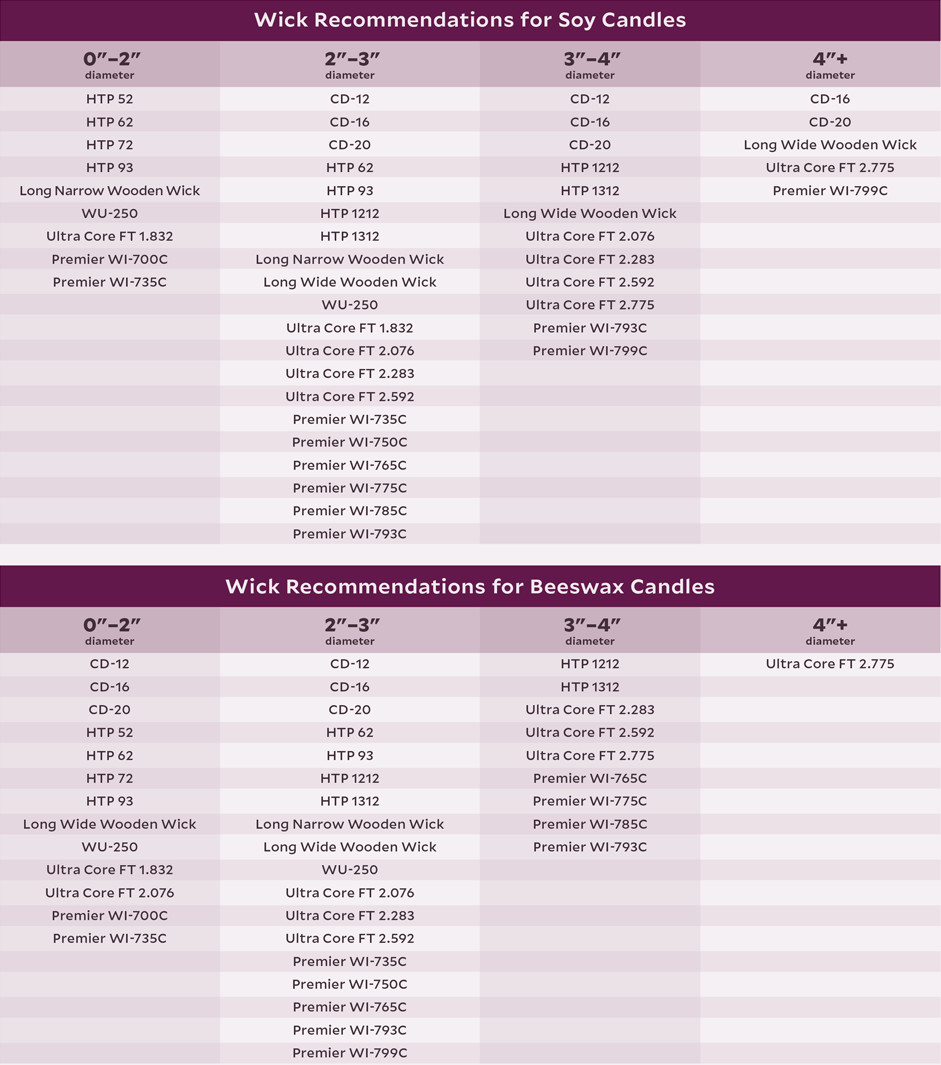
Looking for even more information? Explore more candle articles below!
- How to Make Beeswax Candles
- How to Make Soy Wax Candles
- Candle Making Supplies List for Beginners
- How to Test Fragrances in Candles
- How to Layer Candles
- Candle Tips

